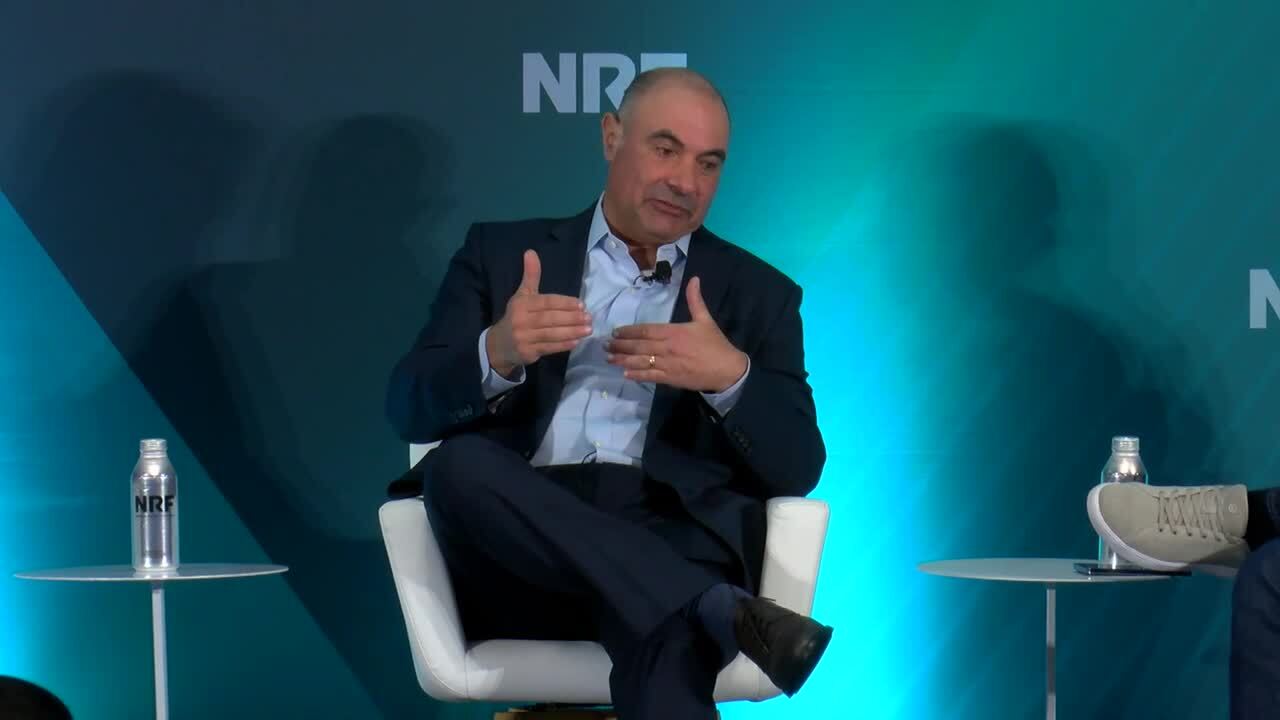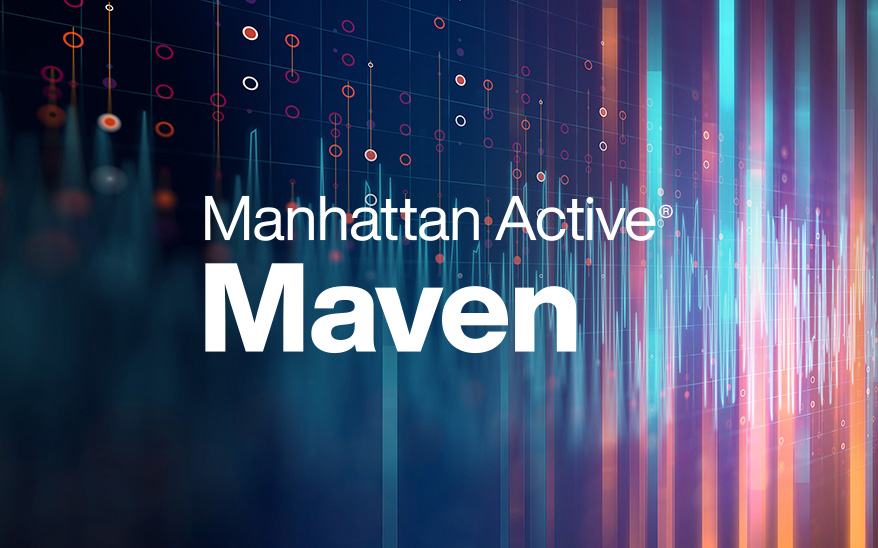Omnichannel is Key: Learnings From Manhattan Associates at NRF’s 2024 Big Show
- February 20, 2024

NRF 2024 Manhattan Panel Discussion
The new year kicked off strong as some 40,000 people from more than 100 countries gathered in New York City for the National Retail Federation’s 2024 Big Show. Professionals from some of the world’s biggest companies, agencies, and vendors—totaling 6,200 brands—attended the event, where they experienced retail’s latest innovations in the retail industry and learned about new trends from 450 speakers.
Among the highlights was an expert panel titled “Reinvent Yourself with Unified Commerce,” moderated by Tony DiPaolo, vice president of Retail Solutions at Manhattan Associates, and included Todd Treonze, senior vice president & chief information officer at Brooks Brothers and Reebok (both in the SPARC Group portfolio), and Shirley Gao, chief digital and information officer at PacSun.
As part of the Exhibitor Big Ideas sessions, the conversation brought to life the importance of omnichannel customer touchpoints in the retail space. Drawing from Treonze’s and Gao’s collective expertise, DiPaolo facilitated a conversation on how technology continues to revolutionize the shopping experience, from personalization options to ways that customers return items. The panelists shared the real-time challenges and opportunities their brands face in today’s market balancing both digital and in-store customer experiences.
Here's the advice they shared on how to evolve by creating unified commerce experiences.
Understand What Drives Your Customers
As technology executives in the retail industry, both Gao and Treonze seek a deep understanding of their customers’ behaviors and preferences through customer data platforms with 360-degree visibility of shopping habits. As a lifestyle brand whose target customer is between 14 and 24 years old, PacSun recognizes the tech-first approach of savvy Gen Z and Gen Alpha shoppers. Understanding that digital native groups look for frictionless retail experiences and expect brands to engage with them on their preferred platforms, PacSun has found value in bolstering its social commerce with the launch of its TikTok store.
By contrast, Brooks Brothers—who recently celebrated its 205th anniversary—is a more mature brand with customers who skew older and require high-touch. As such, brand loyalty is an important element of its business model, one that incentivizes customers to visit their brick-and-mortar locations with perks such as custom tailoring, personalized customer service, and “pick up in store” fulfillment options.
Tracking the trends within these customer bases requires constant adaptation, DiPaolo explained, because an effective omnichannel strategy isn’t a one-time project. Instead, it’s an ongoing journey.
Strive to Be Nimble and Adaptable
After understanding the customer, “It’s about really applying a culture and a methodology that allows you to be nimble, test different strategies, and ultimately maintain a results-focused mindset,” DiPaolo told the audience. “If you can do that, omnichannel is a journey, unifying your technology stack is iterative, and the sooner you start both, the better.”
Such a plan involves optimizing test-and-learn strategies and finding ways to be quick so new technology can be piloted. Treonze has explored emerging RFID technologies that involve tagging products to help with point-of-sale fulfillment. PacSun continues to roll out RFID pilots in stores that streamline a single database and inventory management system.
DiPaolo drove home an important point that innovation for the sake of innovation loses its shine. It’s important to pursue innovation but to do so with effectiveness metrics in close tow to evaluate the desired impact. “With customer behavior changing and technology evolving, a forward-thinking mindset of adaptability is essential,” Gao added.
Foster Omnichannel Capabilities With the Latest Technology
Consumer demands for omnichannel capabilities are driving rapid changes in retail systems and technologies. The latest cloud-based solutions are easier to adapt to this fast-paced environment. “The architecture of these platforms today is so different than it was,” Treonze said. “Ten years ago, if you wanted to get a new change, it was a custom code and a lot of waterfall testing to get it into the environment. Now it’s more plug and play, and we can decide if we want to turn on those features, so that allows us to be more nimble.”
It's much more than just connecting the sales, product, and IT departments. Every corporate initiative now starts with technology. Learn to embrace how business technology “changed from coding and developing to business analysis and system integration,” Gao said. The same applications translate across functions, whether the technology is analyzing labor production or consolidating supply chain processes.
The transition to a modern cloud architecture has also been a welcome change for software developers, especially during the holidays. “We used to have to really staff up and make sure that we were supporting every environment and today, with the way things are architected, there's a lot more consistency and auto-scaling happening,” said DiPaolo.
In the end, DiPaolo said you want to balance the future connections between technological capabilities, sales growth, and customer experience as omnichannel approaches continue to adapt.
Related Insights

PVH Pivots to Ship From Store
PVH pivoted quickly to configure business rules in Manhattan Distributed Order Management to provide online consumers with access to more inventory and fulfillment options.

Point of Sale Software
With our point of sale software, you'll find what you need and then some, including a 360-degree profile of customer insights and omnicart technology for an intuitive experience.

Transform Retail Returns
Reduce return shipping costs and improve the sustainability of a return by optimizing a product’s return path and inventory placement using Manhattan Active Order Management.





